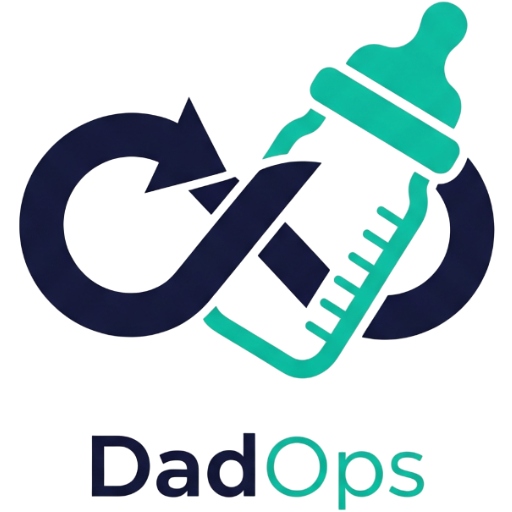Gather your checklist and prep for the prenatal project kickoff: compile genetic screening queries, sync timelines, and suss out family medical histories. Chart personal records, meds, and allergies in your data bank. Schedule to confirm the pregnancy timeline, penciling in milestones like appointment dates and routine ultrasounds. Adjust lifestyle: prioritize folic acid and safe workouts. Don’t forget your partner’s role in steering symptoms and supporting emotionally. Ready to boost your pregnancy IQ?
Key Points
- Confirm pregnancy and determine due date during the first prenatal visit.
- Compile and share family medical history and personal health records with your healthcare provider.
- Discuss and plan future prenatal appointments and important milestones.
- Address immediate lifestyle adjustments, including nutrition and physical activity.
- Understand initial tests and screenings, such as ultrasound and blood work, to ensure healthy pregnancy monitoring.
Preparing for the Appointment

How do you transform from a bewildered dad-to-be into a prenatal appointment pro? Start by mastering the basics. The first prenatal visit is your mission’s launchpad. Arrive prepared: compile a list of questions to ask the doctor. Think of it as your API call sheet for the pregnancy appointment. Inquire about genetic screenings, lifestyle changes, and expected timelines. Gather necessary data—family medical histories, partner’s last menstrual cycle dates. Equip yourself with a notebook or app for note-taking. Consider packing a hospital go-bag early, including important documents and personal items, to alleviate stress when the big day arrives. It’s also important to familiarize yourself with common health concerns that may arise during pregnancy, empowering you to handle any situation with confidence and seek medical advice promptly if needed. Remember, maintaining strong, positive relationships with your partner and healthcare providers is crucial to ensure a supportive and successful pregnancy journey.
Understanding the Agenda

Uncover the secrets of your first prenatal appointment by grasping the key objectives, understanding essential health inquiries, and clarifying your partner’s role. Think of it as a mission briefing: gather your questions (or API calls, if you will) and prepare to sync with your partner on how you’ll support each other. A thorough understanding of system specifications tailored for prenatal care can enhance your experience and ensure you receive the best support available. By incorporating nutrition and maintenance advice, you can optimize your overall health, which may positively impact your prenatal journey. Crafting a birth plan that aligns with your preferences and medical advice can further empower you during this process, enhancing communication with your healthcare team and ensuring a smoother experience.
Key Appointment Objectives
As you gear up for the first prenatal appointment, let’s break down the objectives like a project manager tackling a new sprint. Prioritize attending as a dad at first ultrasound—it’s your debut into the dad role.
Here’s your checklist:
- Confirm pregnancy timeline.
- Document baby’s heartbeat.
- Gather initial health data.
Think of it as collecting critical metrics in a new system. You’ll also want to discuss prenatal vitamins, lifestyle adjustments, and any immediate concerns. Engage actively; your presence shows teamwork. Remember, this isn’t just your partner’s project—you’re co-lead. Optimize your role from day one. It’s also worthwhile to discuss potential preeclampsia risks with your healthcare provider, as early detection can be crucial. Consider also discussing material quality when choosing baby products, as it ensures both comfort and safety for your little one. By understanding when to escalate concerns to a healthcare provider, you can better ensure the health and well-being of both your partner and baby.
Essential Health Inquiries
Why plunge into the first prenatal appointment without a clear roadmap? Equip yourself with essential health inquiries to avoid awkward silence and maximize your data collection. Treat this like your first API call—precision matters.
Consider asking about:
- Family medical history: Have your partner’s medical background ready; it’s key data for health predictions.
- Nutritional needs: Query about any specific dietary adjustments; think of it as optimizing system performance.
- Exercise guidelines: Clarify safe physical activities to maintain system integrity.
- Warning signs: Identify potential red flags; it’s like setting up error alerts in your system.
Additionally, inquire about alternative approaches to C-section delivery to familiarize yourself with potential options that could minimize risks and enhance recovery. Prioritize these inquiries to ensure a productive session. Establishing secure bonds through consistent communication and trust during this process can contribute to a stronger emotional connection, ultimately enhancing your mental well-being. Remember, post-go-live support is crucial for continuous improvement and can be likened to the support you’ll need after your prenatal visit to ensure a healthy pregnancy journey.
Partner’s Role Clarification
When diving into the prenatal appointment, define your role with precision, avoiding the “third wheel” syndrome. Be the project manager: coordinate, support, and gather intel. Deploy your observational skills and ask strategic questions. Remember, silence isn’t golden—it’s inefficient. By drawing inspiration from version control principles, clear communication becomes a cornerstone in avoiding misunderstandings and ensuring smooth coordination. Taking a cue from maintainers, prioritizing rest is crucial for keeping your energy levels optimal to support your partner effectively.
| Role | Action | Objective |
|---|---|---|
| Project Manager | Coordinate schedules | Ensure timely appointments |
| Support Specialist | Provide emotional backup | Strengthen partner’s confidence |
| Data Analyst | Collect medical info | Optimize prenatal planning |
Stay engaged; it’s not just a ride-along. Develop an action plan, anticipate needs, and be ready to adapt. Your mission: ensure a smooth operation. Engage in empathy and active listening to enhance understanding and support during prenatal visits.
Key Questions to Discuss With the Doctor

Prepare your API calls for the doctor’s office by addressing key data points like health and genetic history—think of it as your system’s baseline configuration.
Next, clarify pregnancy expectations and timeline, which is fundamentally your project’s critical path. It’s also crucial to discuss the potential health implications of conditions like gestational diabetes, which can affect both the mother and the baby during pregnancy. Understanding the risks of early pregnancy, such as miscarriages and ectopic pregnancies, can help you and your healthcare provider take proactive measures.
Finally, request nutrition and lifestyle guidance to optimize system performance, because you’re not just building a family, you’re engineering a legacy.
Additionally, consider discussing the potential for enhancing user experience through adaptive responses, similar to how the Pupil Dilation Module enables real-time monitoring and responsiveness in various applications.
Health and Genetic History
Curious about what essential data you need to gather for the first prenatal check-up? Let’s cut to the chase: compiling your health and genetic history is like setting up a server—vital for smooth operations.
Start by collecting key information for your doctor. Skip the fluff; focus on these essentials:
- Family medical history: Identify any recurring conditions. Patterns aren’t just for data sets.
- Genetic disorders: Note any known hereditary issues. Think of this as debugging future code.
- Personal health records: Include previous surgeries or conditions. Context matters.
- Medications and allergies: Log current prescriptions. Avoid software—or bodily—crashes.
Equip yourself for a seamless appointment. Just as bonding protocols ensure reliable data transfer in networked systems, gathering comprehensive medical history facilitates effective communication with your healthcare provider. Understanding your unique sleep patterns can also contribute to your overall well-being during pregnancy, as quality rest is essential for both you and your baby.
Pregnancy Expectations and Timeline
Dive straight into the heart of your upcoming prenatal appointment by setting clear expectations and timelines—consider it the project roadmap for the next nine months.
Sync up with the doctor by asking:
- When’s the due date? (Your ultimate deadline)
- What’s the schedule for future appointments? (Milestones to track)
- How will each trimester unfold? (Project phases)
- Are there any standard tests or ultrasounds required? (Quality checks)
Ensure you’re aligned with the doctor’s timeline. Discuss potential changes and adjustments.
The goal? Minimize surprises. Remember, this is a dynamic project, not a static one. Stay agile, adapt, and anticipate what’s next on the roadmap.
Nutrition and Lifestyle Guidance
Now that you’ve got the project timeline sorted, it’s time to optimize your resources and guarantee a smooth operation.
Engage in nutrition and lifestyle guidance with your doctor to ensure your partner’s well-being and the baby’s robust development. Ask about dietary changes and lifestyle tweaks that’ll boost health metrics.
- Dietary Essentials: What key nutrients should my partner focus on?
- Exercise Protocols: What types of physical activities are recommended or restricted?
- Supplementation Needs: Are there specific prenatal vitamins or supplements we should consider?
- Lifestyle Adjustments: What daily habits should we modify to support a healthy pregnancy?
Prepare these queries and keep your operation running seamlessly.
Gathering Family Medical History

Ever wondered why gathering family medical history feels like assembling a complex algorithm? It’s because you’re piecing together generations of health data, which can impact your baby’s future. Start by querying parents and grandparents for critical data points, specific conditions, and notable health incidents. Here’s a table to simplify what you need:
| Family Member | Key Conditions | Notes/Incidents |
|---|---|---|
| Mother | Diabetes, Cancer | Year diagnosed |
| Father | Heart Disease | Treatments received |
| Maternal Grandmother | Hypertension | Life expectancy impact |
| Paternal Grandfather | Stroke | Genetic predisposition |
Create a checklist, cross-reference your findings, and prepare for your first prenatal appointment.
Documenting the Pregnancy Timeline

Having assembled your family’s health matrix, it’s time to set your coordinates on the pregnancy timeline. Think of this as plotting a project roadmap, but with a more exciting deadline. Start by marking the day you launched this new life mission—your partner’s last period. Your data points will help you anticipate milestones and plan accordingly.
- Calculate the Estimated Due Date (EDD): Use an online calculator or app. It’s like finding the ETA for your most important delivery.
- Track Trimester Progress: Divide the journey into three phases.
- Note Key Appointments: Keep track of all essential meetings.
- Log Symptoms & Changes: Document everything. It’s your dynamic log file.
Exploring Prenatal Testing Options

Gear up for your prenatal testing mission by understanding the types of tests, when they’re done, and how to decode the results. Think of it as running diagnostics on a system—timing is essential, and each test has a specific function.
Don’t worry, interpreting results won’t require advanced code-breaking skills, just a few questions to your healthcare provider.
Types of Prenatal Tests
When diving into the world of prenatal tests, how does one not feel like they’re compiling a report for the board? You’ve got options, and it’s like a menu you didn’t know you ordered.
Consider these key tests:
- Ultrasound: The baby’s first photo op. Capture the moment and check development.
- Blood Tests: Think of it as running diagnostics on the system. Check for genetic conditions.
- Amniocentesis: Advanced probing, but only if necessary. It’s like the root access of tests.
- Chorionic Villus Sampling (CVS): Extract data early. More invasive, but informative.
Each test provides insights, aiding your mission briefing.
Timing for Tests
Ever wonder why timing is crucial in prenatal testing? Just like deploying code, timing guarantees accuracy and efficiency. Scheduling tests at the right moment maximizes their effectiveness. Here’s a quick breakdown:
| Test | Timing | Purpose |
|---|---|---|
| Blood Tests | 8-10 weeks | Check for genetic conditions |
| Ultrasound | 18-20 weeks | Assess fetal development |
| Glucose Screening | 24-28 weeks | Detect gestational diabetes |
Don’t wing it. Sync these tests with your schedule to guarantee optimal results. Timely execution isn’t just for software rollouts; it counts for baby’s health too!
Test Result Interpretation
Interpreting test results is like debugging code—it’s all about finding meaning in data. When you immerse yourself in prenatal testing, clarity becomes your best friend.
Start by understanding what each test screens for and why it’s essential. This isn’t just about numbers; it’s about ensuring everything aligns with healthy development.
Remember, it’s okay not to be an expert; that’s why you’ve got the doc.
- Ask for clarity: Don’t hesitate to request simpler explanations.
- Stay informed: Research test types and their purposes.
- Record findings: Note key results during discussions.
- Confirm next steps: Ensure you know what follows each test.
Approach it like a system update—necessary and valuable.
Discussing Lifestyle and Nutrition

How does one optimize the prenatal playbook when it comes to lifestyle and nutrition? Start by querying the doc (yes, think of it as an API call) about essential nutrients: folic acid, iron, and calcium are your MVPs.
Prioritize balanced meals, monitoring portion sizes like a hawk with a spreadsheet. Guarantee she hydrates properly—water’s your unsung hero. Encourage moderate exercise; think walking, not marathon prepping.
Log caffeine intake; it’s a limited resource now. Avoid alcohol, raw fish, and undercooked meats—consider them the bugs in the system. Keep stress levels low; she’s not a server, so downtime is vital.
Reviewing Pregnancy Symptoms and Concerns

When beginning on the mission of reviewing pregnancy symptoms and concerns, treat it like debugging a new software release. Consider this phase a critical system check. You’ll need to gather information, identify issues, and plan responses. Engage with your partner by asking about her symptoms and any worries she might have.
Here’s a concise checklist to guide your inquiry:
- Morning sickness: Not just a morning thing—track its frequency.
- Fatigue: Gauge energy levels, like monitoring CPU usage.
- Mood swings: Recognize these as natural updates, not bugs.
- Food aversions: Identify triggers, akin to avoiding incompatible software.
Approach this with patience and readiness to support.
Understanding the Role of the Father

Ever wondered what your role as a father-to-be truly entails? Think of yourself as the COO of this pregnancy operation. Your mission: support, strategize, and streamline.
Start with these key actions:
- Sync Calendars: Coordinate your schedules for appointments. Reliability is your first deliverable.
- Data Collection: Track her symptoms, mood shifts, and cravings. Consider it your daily metrics.
- Research: Learn pregnancy stages and what to expect. Knowledge minimizes surprises.
- Provide Backup: Be ready for emotional and physical support. It’s your KPIs in action.
Planning for Future Appointments

Before you plunge into the world of prenatal appointments with all the finesse of a seasoned project manager, let’s get your planning toolkit in order. Think of this as scheduling sprints, not marathons. You’ll juggle more appointments than a data center handles requests, so let’s streamline operations.
- Sync Calendars: Ensure your calendar and your partner’s medical schedule are in harmony.
- Track Milestones: Like tracking code updates, note key prenatal stages.
- Prepare Questions: Compile a list like API calls for each visit.
- Review Data: Keep previous appointment notes handy, ensuring continuity in your prenatal journey.
Planning pays off!
Conclusion
Wrap up your mission by compiling your intel: confirm the due date, jot down dietary guidelines, and list any recommended tests. Don’t forget to document family medical history—think of it as your “system requirements.” Discuss lifestyle tweaks and symptom management, ensuring you’re ready for any “bug fixes.” Embrace your role in this parenthood project, and schedule future check-ins to stay updated. Remember, your “dad OS” is now in beta—enjoy the upgrade!



